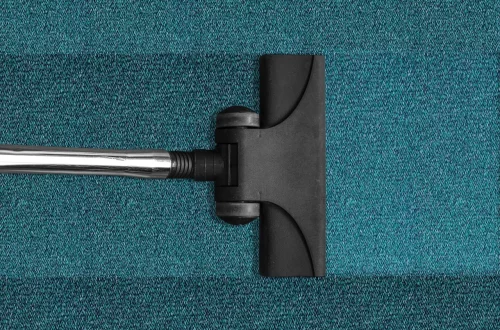
The Ultimate Guide to Straight Razor Shaving Blades for Beginners
Straight razor shaving is an art that has been revered for centuries, symbolizing precision, craftsmanship, and a refined grooming experience. Unlike modern shaving methods, which often rely on disposable razors and multi-blade systems, straight razors offer a more intimate connection to the shaving process. For beginners, the allure of straight razor shaving can be both exciting and intimidating. It’s a skill that requires practice, patience, and a deep understanding of the tools involved.
In today’s world, where personal grooming is often rushed, the act of shaving with a straight razor invites you to slow down and appreciate the ritual. The smooth glide of the blade against the skin, the careful preparation of lather, and the satisfaction of achieving a close shave all contribute to a sense of accomplishment and self-care. However, entering this world requires knowledge, especially when it comes to selecting the right blades.
The right blade can enhance your shaving experience, making it smoother and more enjoyable. With so many options available on the market, understanding the types of blades, their materials, and their maintenance is crucial for any beginner. This guide aims to provide you with insights into straight razor shaving blades, helping you make informed choices that will elevate your grooming routine.
Understanding Straight Razor Blades
When diving into the world of straight razors, understanding the anatomy and function of the blade is essential. Straight razor blades are typically made from high-carbon steel, stainless steel, or a mix of both. Each material has its own set of benefits and drawbacks, influencing factors such as sharpness, durability, and ease of maintenance.
High-carbon steel blades are known for their exceptional sharpness and edge retention. They can be honed to a finer edge compared to stainless steel, which means they can provide an incredibly smooth shave. However, these blades require more maintenance, as they are prone to rust if not properly cared for. Users must ensure they dry the blade after each shave and store it in a dry environment to prevent corrosion.
Stainless steel blades, on the other hand, offer greater resistance to rust and corrosion, making them less demanding in terms of maintenance. They can still provide an excellent shave, but may not achieve the same level of sharpness as high-carbon steel blades. Beginners often find stainless steel blades more forgiving, as they are less likely to require frequent honing and are easier to manage.
Another critical aspect to consider is the blade’s grind. The grind refers to the shape of the blade’s edge, which can affect its performance. Common grinds include full hollow, half hollow, and quarter hollow. Full hollow grinds are very thin and flexible, allowing for a close shave but requiring a lighter touch. Half hollow grinds strike a balance between rigidity and flexibility, making them versatile for various shaving styles. Quarter hollow grinds are thicker and more robust, providing durability and are often preferred by beginners for their stability.
Understanding the different materials and grinds will empower you to make an informed decision when selecting your first blade. Each option has its unique characteristics, and exploring them will enhance your straight razor shaving journey.
Types of Straight Razor Blades
As you embark on your straight razor shaving adventure, you will encounter several types of blades. Each type caters to different preferences and skill levels, so understanding these options is fundamental for beginners.
First, let’s discuss the classic straight razor blade, which is typically around 5/8 to 7/8 inch wide. This width is ideal for beginners, as it strikes a balance between maneuverability and the ability to provide a close shave. Many traditional razors fall into this category, making them widely available and easy to find.
Next, we have the shavette, a modern alternative to the classic straight razor. Shavettes use replaceable blades, often made from stainless steel, offering a similar experience to traditional straight razors without the need for honing and stropping. This feature makes shavettes an excellent choice for beginners who want to experience the straight razor feel without the commitment to maintenance. However, the learning curve may still be steep, as the technique remains the same.
Additionally, some brands produce disposable blade straight razors. These razors come with a design that allows you to swap out the blade when it dulls, similar to a shavette but with more substantial handles. They provide the convenience of modern razors while still maintaining the essence of traditional straight shaving.
For those looking for a more customized experience, there are custom-made straight razors available. These razors can be tailored to your specifications, including blade width, material, and handle design. While this option can be more expensive, it allows for a unique shaving experience.
Each type of blade has its advantages and disadvantages, making it essential for beginners to consider their preferences, budget, and commitment to maintenance. Exploring these options will help you find the perfect blade that aligns with your shaving style.
Maintaining Your Straight Razor Blades
Proper maintenance of straight razor blades is crucial for ensuring a long lifespan and optimal performance. Regular care not only keeps the blades sharp but also enhances the overall shaving experience. Here’s a breakdown of essential maintenance practices for your straight razor blades.
Firstly, honing and stropping are two critical processes that keep your blade sharp. Honing involves using a whetstone to sharpen the blade’s edge, while stropping is the act of polishing the edge on a leather strop to align the microscopic teeth of the blade. Beginners should invest in a good quality strop and learn the correct technique for stropping, as this can significantly improve the sharpness of the blade.
Additionally, after each shave, it’s essential to clean and dry your blade thoroughly. Rinse the blade with warm water to remove any shaving cream or hair, and then dry it immediately with a soft cloth. This practice helps prevent rust and keeps the blade in good condition.
Storing your straight razor properly is another vital aspect of maintenance. It’s best to keep your razor in a dry environment and consider using a blade guard to protect the edge during storage. Avoid leaving it in damp areas, as moisture can lead to corrosion.
Lastly, be mindful of the frequency of honing. While it’s tempting to hone your blade frequently, doing so too often can wear down the blade prematurely. Instead, pay attention to how the blade feels during shaving. If it begins to tug or pull, it’s time for a touch-up.
By following these maintenance tips, you can ensure that your straight razor blades remain sharp and ready for a smooth shaving experience every time.
Choosing the Right Blade for Your Needs
Selecting the right straight razor blade is a personal decision influenced by various factors, including your shaving style, skin sensitivity, and experience level. Here are some considerations to help you make the best choice for your needs.
First, think about the frequency of your shaves. If you shave daily, you might prefer a high-carbon steel blade for its sharpness, as it can provide a closer shave. However, if you have sensitive skin or shave less frequently, a stainless steel blade might be a better option, as it’s less likely to cause irritation.
Next, consider the width of the blade. For beginners, a 5/8 inch blade is often recommended, as it offers a good balance between maneuverability and effective cutting. As you gain experience, you might want to experiment with wider blades to see how they feel during your shave.
Additionally, take into account the grind of the blade. If you are looking for versatility, a half hollow grind might be the most suitable choice, as it provides a good balance of flexibility and rigidity. However, if you prefer a very close shave and are comfortable with a lighter touch, a full hollow grind could be ideal.
Lastly, don’t hesitate to seek advice from experienced straight razor users or professionals at grooming shops. They can provide valuable insights and recommendations based on your specific needs and preferences.
Choosing the right blade is an integral part of your straight razor shaving journey. By considering your shaving habits and preferences, you will be well on your way to finding the blade that suits you best.
In conclusion, straight razor shaving is a rewarding experience that combines skill and artistry. By understanding the different types of blades, their maintenance needs, and how to choose the right one for your needs, you will be well-equipped to embark on this journey. Remember, practice makes perfect, and soon you’ll master the art of straight razor shaving, enjoying the smooth results and the personal satisfaction that comes with it.
**Disclaimer:** This article is not intended as medical advice. If you have any health concerns, please consult a qualified healthcare professional.




